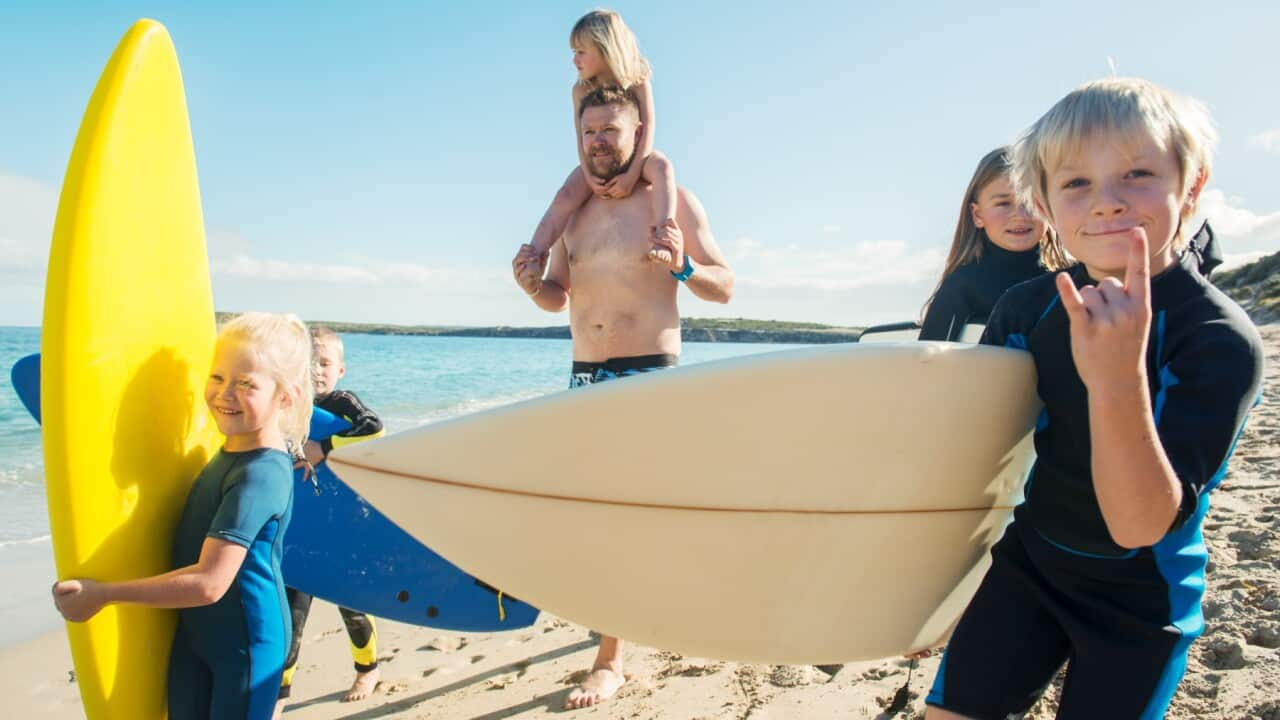Key Points
- There are calls for influencers to be involved in changing the culture around sun safety among young people
- The Melanoma Institute says nothing has changed in the last four decades for adolescents and sun safety behaviour
Gina Savage knows better than anyone how dangerous the sun can be.
Having gone through two years of aggressive treatment following her stage one melanoma diagnosis aged just 20, she was confident her cancer was gone for good.
She instead received the life-changing news that it had spread to other parts of her body.
"I've been on these treatments for six years now, and I haven't been able to find a treatment that will work for me," the now 27-year-old told SBS News.
"I don't know what my future holds."
Australia has the highest rates of melanoma in the world, with one person diagnosed with the disease every 30 minutes and another dying from it every six hours.
It's also the most common cancer impacting 20 to 39-year-olds.
Ms Savage said social media influencers have an important role to play in promoting sun safety among their young followers.
"We are currently growing up at a time where a golden tan is the most beautiful idea to a young person," she told SBS News.
"We need to get through those young children, and I think having influencers on board with the process, as opposed to having ones that promote tanning oils and being out in the sun all day long … that's sort of the avenue we should probably head down."
Better prevention education needed for young people
It's a call backed by the Melanoma Institute Australia (MIA), which wants the federal government to commit to a long-term, modernised prevention campaign that's relevant to children and adolescents.
The MIA's co-medical director, Professor Georgia Long, said that given "nothing has changed in the last four decades for adolescents and sun safety behaviour", current tactics are clearly not working.
"Social media feeds are filled with tanned bodies. In fact, the deeper the tan the better. Their collective voices are loud, and we have sat on the sidelines in virtual silence," she told the National Press Club on Wednesday.
"We need to urgently bolster sun safety as a cancer prevention message, and give it the public health prevalence it deserves."

Professors Georgina Long and Richard Scolyer are co-medical directors of the Melanoma Institute Australia. Source: AAP / LUKAS COCH
"We need you to step up and use your influence for good by helping change the national narrative around sunburn and tanning," he told the National Press Club.
Professor Long said that having a warning on tanning oils could also help to save lives.
"It's like cigarettes," she said.
Calls to mandate sun safe practices
In 2007, Annette St Clair's 20-year-old daughter Amie found a lump in her groin.
"The GP thought it initially was a haematoma because she's such an aggressive sports girl out in the sun lot," she told SBS News.
"But that lump got bigger over the next few days, and she saw another GP and had an ultrasound and a biopsy and it came back as melanoma."
Amie was well for a few months after receiving treatment, but then the lump came back.
"It spread to major organs, her brain, her ovary, her pancreas," Ms St Clair said.
"Sadly, the day after her 23rd birthday, she passed away of melanoma."
Ms St Clair said "simple things" like mandating shades around all sporting grounds could have helped to prevent Amie's cancer.
"I look at our local softball fields, and yes there are some trees, but not enough trees. And there's not enough portable shades that we could put up," she said.
Creating uniforms with sun safety front of mind, and having sunscreen machines at local swimming pools and sporting grounds could also help, Ms St Clair said.
"I know that it does take a lot of funding. But I think in the long run, if we can prevent other young people from dying from melanoma, it's going to save our government a lot of money," she said.
"Not only that, it's going to save people a lot of heartbreak."











